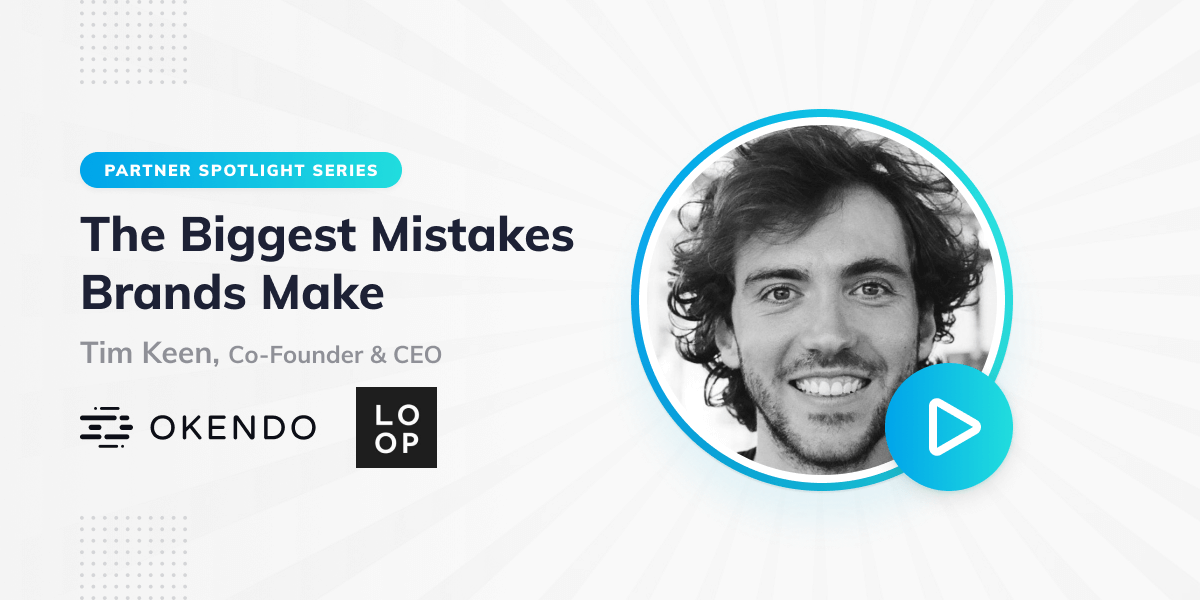electrIQ Marketing is a full-service Gen-Z agency looking to help ecommerce brands aggressively scale with lifecycle strategies and team of in-house specialists. They’re part CMO, part agency, part employee, but fully focused on producing revenue-backed results.
I had the pleasure of sitting down with Brandon Amoroso, CEO of electrIQ Marketing, to discuss how he started his agency and what brands should do to enhance their customer lifecycle marketing with SMS.
You started your career working in marketing for a well-known online DTC beverage brand managing their online media campaigns. Fast forward to today, and you're now the founder and CEO of electrIQ marketing, a full-service agency for some of the world's most successful ecommerce brands. What made you decide to go your own route?
Much of it had to do with wanting to work with a broader variety of brands instead of remaining at my previous organization. I was beginning to feel I was approaching my ceiling in terms of what I could learn. I’ve always wanted to spearhead my own entrepreneurial venture, so launching electrIQ was a logical step forward for me.
I worked as a freelancer for a year and a half before graduation in order to support myself enough that I didn’t have to get a real job! Luckily, I was able to build the business up to a point where I could hire a full-time team member when I graduated and haven’t looked back since.
As someone who worked for an online brand and then transitioned to a CEO, can you identify any pain points you overcame in your previous role that you’ve leveraged in your new one?
A major operational pain point is when people get too caught up in the day-to-day execution of their campaigns instead of taking a step back to examine their high-level strategy. Many organizations I’ve worked with fall into this trap; not setting aside time to ask, “Where are we going? What’s the strategy behind this?” Now, I make an effort to assess why we are doing particular things on a client’s behalf.
We’ve developed a 3-step electrIQ roadmap that funnels into our processes and services:
- What are our goals? (i.e. We want to be the leader in the DTC widget category)
- What’s our strategy to achieve these goals? (i.e. We’ll focus on high value content creation)
- What are the tactics we’ll use to execute this strategy? (i.e. content marketing, email marketing, seo, etc.)
Were there any specific parts of your previous job you believe set you up for success that you’re able to bring to electrIQ marketing?
Absolutely. I started with that company as a social media intern in high school when they only had around five employees. I was able to wear a variety of hats as they grew over the next three to four years and take opportunities that wouldn’t typically be afforded to a highschooler. I gained experience in almost every aspect of performance marketing, which has allowed me to progress to managing a team of 20 and oversee multiple marketing channels for electrIQ’s clients.
electrIQ marketing offers a variety of services for online brands, one of which is lifecycle marketing. In your experience, which stage of the customer lifecycle have you seen online brands struggle to market to the most?
It varies on a brand-to-brand basis. Some excel at filling the tops of their funnels and encouraging people to make their first purchase, but their retention strategies — and, therefore, their customer lifetime value — are lacking. The percentage of people making a second or third purchase decreases dramatically.
Conversely, we have clients who aren’t getting the necessary top-of-funnel volume but have high repeat purchase rates.
Those are typically the two categories our brands fall into, which is why everything we do starts with a full electrIQ audit. What strategies have they tried in the past? What does retention look like? How do one-off order rates compare to subscriptions? Do they have all best practices implemented? From there, we identify which areas to focus on first that will generate the highest ROI.
What do you think contributes to people missing their mark with customer acquisition and retention?
I’ve observed that brands struggle with retention the most. Brands tend to focus on acquiring new customers, especially once they’ve undergone a round of fundraising and feel pressure to spend all this money on new customer acquisition. Without a solid retention strategy in place, though, they won’t be able to generate significant long-term results from their ad dollars.
Much of this issue has to do with a lack of data. Organizations don’t always have the ability to analyze which channels (or specific offers and segments within a channel) generate the highest CLTV. We want our clients to be able to confidently say, “Okay, these are the different offers we’re running within paid social and depending on which offer people come through, they are X% likely to make a second or third purchase at this order value.” If you only use data native to the platform you’re advertising on, whether it’s Facebook or TikTok ads, you’re only gleaning insight into that first purchase.
Merely looking at cost per acquisition is not a practical gauge of how valuable a customer is to you. For example, we saw something like this at my previous company: if we sold five bottles of wine for five dollars instead of six for six dollars, the cost per acquisition was cheaper for the former. So, if you were only analyzing within Facebook, you would assume that’s the method you want to go with. However, if you looked at the repeat purchase rate and brought the prices closer to what they should be, like $7.50 Manufacturer’s Suggested Retail Price (MSRP), the six-for-six people stayed for much longer at a higher reorder rate with a greater customer lifetime value.
That’s why it’s vital for us to investigate what’s happening after people make their first purchase and segment based on the types of offers or channels they’re coming through. Once you have that data, you know where you should be spending your money.
Are there any channels you foresee presenting a significant opportunity for online brands to leverage throughout the customer lifecycle journey?
I think the most noteworthy channel everyone is hopping onto is SMS. We’ve seen significant returns with SMS, but only if we use it wisely. You’ve probably signed up for an SMS list that sends you offer after offer until it’s obnoxious, so we try to reserve it for special promotions or other communications relevant to the customer.
Giving consumers a voice regarding how we interact with them matters. For instance, allowing people to manage their subscriptions, change their delivery dates, and take other actions encourages them to stay longer instead of forcing them into specific terms.
The same is true for SMS: we want to know how they want to be communicated with, so establishing their preferences from the get-go helps us tailor their experiences more effectively.
SMS is still a relatively new channel for many online brands. What challenges do you see online brands face with their SMS strategies? And without naming names, of course, are there any examples that come to mind, like tactical errors or mindsets that you try to direct brands away from?
I’ve noticed brands have a tendency to only send promotional content with SMS instead of using personalization tags. You’re being charged by message length, especially if you’re not sending an MMS, so those are important to include. People don’t appreciate being hammered with discount after discount without being told anything about the brand, who they are, or how their products will be helpful. Purely promotional messages don’t entice anyone to click through; there needs to be some educational component. An example is the CBD industry: education is essential because CBD is so misunderstood, but brands are afraid of sending too many texts, so they focus on the wrong content.
Something else that irks me is that many companies will virtually cease communication after a customer makes a purchase, especially if they’re on a subscription. It’s like once you’re a subscriber, marketers think, “Let’s never talk to you again because we don’t want to remind you that you’re on a subscription.”
In reality, brands should send a welcome text immediately after someone joins their subscription program with all the information about managing their subscriptions and rewards and continue to send reminders and educational content.
Where do you see SMS being utilized the most in customer lifecycle marketing?
Right now, most brands use SMS to get people to make their first purchase. There’s so much more to be done with retention, though — you can only do so much top-of-funnel — which is why we at electrIQ focus on hyper-personalizing all the subsequent flows and automations once a shopper becomes a customer.
If you’re a customer who has made three orders before but recently abandoned your cart before your fourth order, maybe we embed your loyalty points into the abandoned cart message because why would we push a discount on you? We want to incentivize loyalty program adoption, so you get in the habit of shopping with our brand.
Something we have to really sell our clients on is being okay with sending texts that aren’t revenue-generating. If someone is on a subscription, the mark of success is getting them to stay subscribed, which means not being overly pushy with people who can leave you the moment you become too aggressive.
We try to frame SMS around exclusivity and use it for new product releases, exclusive interviews, etc. Beyond that, 80% of our text communications are automated because they’re connected to a customer action or data point, ensuring they're more relevant and timely. And segmentation — you cannot run effective campaigns without segmentation.
Do you think SMS should replace any specific channel, or should it always work in sync with other methods?
I think of it in an omnichannel marketing context: if you see a billboard and an Instagram ad selling Kombucha within hours of each other and then see the same Kombucha at the store a bit later, you’re more likely to purchase it.
The same principle applies to SMS’s relationship with email. They work better together, one channel doing things the other cannot. Maybe we’ll send someone an abandoned cart message via text 45 minutes after they leave a site, but an email two hours later if they still haven’t purchased, another text after 24 hours, and another email after that. Some people respond better to one or the other, so combining them will set you up for success instead of relying on a single channel.
We've gone to great lengths to combine our paid efforts with SMS, especially with the new iOS updates, to better measure direct attribution. We’re testing methods like running Instagram carousel ads, which are three-part posts where the last card is a swipe-up that lets you sign up for SMS marketing and includes the promotional offer. This technique enables us to engage with consumers directly, measure ROI, and extract data via SMS quizzes and other forms of direct communication.
There are other cross-channel possibilities as well. We like to create conditional blocks in Klaviyo that only activate for people who aren’t subscribed to SMS with an introductory offer. You can also push people to enroll in SMS with language like, “Sign up for this exclusive SMS list to be the first to know about X new product release” through your website, emails, and social media. This functionality applies to any platform; it just depends on how you set up the link so when people are on their phones, it will open their text message apps instead of a landing page.
You mentioned Klaviyo, but are there any other technologies you recommend brands use for their SMS strategy?
We primarily use Attentive, Postscript, SMSBump, and have started using Klaviyo as they release more features. We also have a few clients that use Emotive. We definitely have our preferences, but SMS is growing so quickly (all five of the aforementioned companies have had massive fundraising rounds this year) that it’s still unclear which one or two players will come out on top.
Attentive is helpful because their subscriber growth methods are extremely comprehensive, like the swipe-up method I just described. As a premier partner, we work closely with their agency strategy team to put that together for clients and implement a two-step modal that asks customers for their emails first and phone numbers second. This practice is advantageous because we usually send a standard email offer, but the SMS screen will be differentiated with a separate offer when consumers reach that point.
For example, we’ll offer 40% off for your first subscription order via email, but we’ll give you a free bag of treats every month if you sign up for the SMS list. If the offer is the same, why would people give their phone numbers when you already have their emails?
Postscript is great for segmentation and connecting to Shopify’s back end. It’s not as robust from a subscriber collection standpoint, but it’s more advanced when it comes to building segments and triggering respective automations.
What advice would you give to online brands that are considering incorporating SMS into their customer lifecycle strategy? What should they take into account before diving into it to ensure they're set up for success?
You should define your strategy and have an answer to the question, “Why is this another channel you’re going to implement?” I’d say it’s a no-brainer for most brands to start using SMS, but you need to have goals, KPIs, and other objectives. If you go into this blindfolded, you have no measure for success.
Software integration is critical, too. You want to make sure the service you use integrates with your tech stack so you can request reviews and embed loyalty points via SMS.
And again, make sure it’s in sync with your 3-step electrIQ plan:
- What are your goals?
- What’s your strategy to achieve these goals?
- What are the tactics you’ll use to execute this strategy?
Brandon is contactable via LinkedIn and @electrIQmrkting on Twitter. To learn more about Brandon’s thoughts on SMS, check out our Masterclass, Level Up Your SMS Marketing: How to choose the right platform and drive more revenue for your DTC brand.





